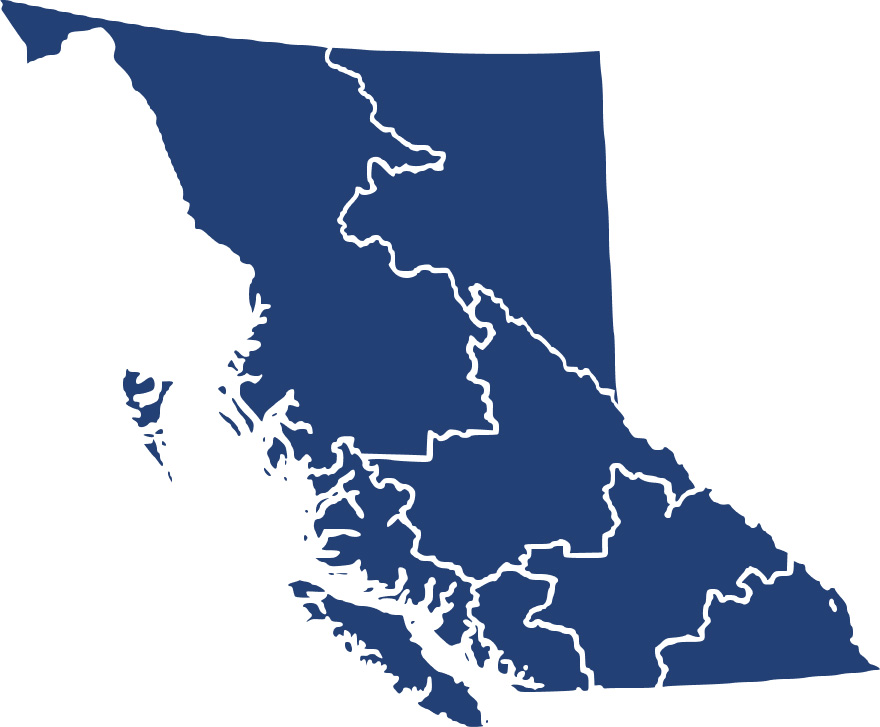Career Overview
Concrete finishers:
- Smooth and finish freshly poured concrete
- Apply curing or surface treatments
- Install, maintain and restore various masonry structures such as foundations, floors, ceilings, sidewalks, roads, patios and highrise buildings
- Work for construction companies, cement and concrete contractors and manufacturers of precast concrete products
- May be self-employed
Duties
Concrete finishers perform some or all of the following duties:
- Check formwork, granular base and steel reinforcement materials and direct placement of concrete into forms or onto surfaces according to grade
- Fill hollows and remove high spots to smooth freshly poured concrete
- Operate power vibrator to compact concrete
- Level top surface of concrete according to grade and depth specifications using straightedge or float
- Give desired finish to concrete surfaces using hand and power tools
- Install anchor bolts, steel plates, door sills and other fixtures in freshly poured concrete
- Apply hardening and sealing compounds to cure surface of concrete
- Waterproof, damp-proof and restore concrete surfaces
- Repair, resurface and replace worn or damaged sections of floors, walls, roads and other concrete structures
Earnings
Earnings is income that workers receive in exchange for their labour. Depending on the type of employment, earnings can be in the form of wages (hourly), salaries (fixed monthly or annual) or self-employed earnings.
Work Environment
# Workers Employed
1,330% Employed Full Time
42%- Work takes place in an indoor environment where temperatures may vary
- Work also takes place outdoors, so workers may be exposed to various weather conditions
- Working with equipment, machinery or power/hand tools may be a source of injury
- Workers may risk injury while working dangerous locations such as construction sites
- Work may involve heavy vibrations and airborne particles, such as sand and dust
Career Pathways
Red Seal trade certification allows for movement between provinces.
Progression to supervisory positions is possible with experience.
Related Careers
Occupational Interests
It’s important to understand what kinds of occupations align with your interests.
For more about occupational interests visit Skills for the Future Workforce > Characteristics.
Here are the top occupational interest(s) for this career profile:
Job Titles
Education, Training and Skills
- Completion of secondary school is usually required
- Completion of a two- to four-year apprenticeship program, or
- Over three years of work experience in the trade and some high school, college or industry courses in cement finishing are usually required to be eligible for trade certification
- Trade certification for concrete finishers is compulsory in Quebec and available, but voluntary, in Newfoundland and Labrador, Nova Scotia, Prince Edward Island, New Brunswick, Manitoba, Alberta and British Columbia
- Trade certification for cement masons is available, but voluntary, in Ontario
- Red Seal endorsement is also available to qualified concrete finishers upon successful completion of the interprovincial Red Seal examination
For more information please see SkilledTradesBC's website at https://skilledtradesbc.ca.
Concrete finishers who are certified for that occupation by a regulator elsewhere in Canada can apply for the same certification from the regulator in B.C. Under the terms of the Canadian Free Trade Agreement (CFTA), most applicants who are transferring their credentials from elsewhere in Canada will not be required to complete additional training or testing. However, the B.C. regulator may ask applicants to provide further information such as a letter of good standing, references, or criminal record check.
For those who trained outside of Canada and never received certification from any Canadian jurisdiction, a full assessment is likely needed. Most occupational regulators have a process for assessment and recognize internationally trained applicants.
Contact SkilledTradesBC for details on how to apply for certification in B.C.
For information about labour mobility in Canada, visit www.workersmobility.ca.
View a list of Professional Regulatory Authorities in B.C.
Trades training resources
Visit our trades training page at www.workbc.ca/trades to learn about apprenticeship and trades training in B.C.
Education programs in B.C.

Skills
Every job calls for a certain set of skills. Knowing those skills is the first step in finding a good career fit.
Here, you will find the 10 most relevant workplace skills. Some are more important to achieving success in a certain career than others. These skills may come naturally to you or you may need to gain them through education, training and experience.
See the list of work-related skills below, ranked in order of importance for this career. Check out the list and see if this career matches your skills—take that first step!
Keeping track of and assessing your performance, other individuals, or organizations to make improvements or take corrective action.
Adjusting actions in relation to others' actions.
Conducting tests and inspections of products, services or processes to evaluate quality or performance.
Managing one’s own time and the time of others.
Talking to others to share information effectively.
Being able to solve novel, ill-defined problems in complex, real-world settings.
Using logic and reasoning to identify the strengths and weaknesses of alternative solutions, conclusions or approaches to problems.
Giving full attention to what other people are saying, taking time to understand the points being made, asking questions as appropriate, and not interrupting at inappropriate times.
Considering the relative costs and benefits of potential actions to choose the most appropriate one.
Controlling operations of equipment or systems.
Labour Market Statistics
Discover data, facts and information that have been gathered and analyzed. Learn about the characteristics of the economy and labour market in B.C.
Employment
Find out about employment types and trends by region and industry.
Employment
1,330Employment by Region















| Region | Employment | % Employment of this Occupation |
|---|---|---|
| Cariboo | 25 | 1.9% |
| Kootenay | 45 | 3.4% |
| Mainland/Southwest | 905 | 68.0% |
| North Coast and Nechako | 0 | 0.0% |
| Northeast | 10 | 0.8% |
| Thompson-Okanagan | 155 | 11.7% |
| Vancouver Island/Coast | 175 | 13.2% |
Labour Market Outlook
The B.C. Labour Market Outlook is a 10-year forecast of the expected supply and demand for labour in the province. It’s usually updated every year. The purpose is to provide British Columbians with the knowledge to make informed decisions on careers, skills training, education and hiring.
Forecasted Job Openings (2023-2033)
340Forecasted Job Openings
Forecasted Employment Growth Rate
Composition of Job Openings
Job Openings by Region (2023-2033)















| Region | Job Openings | Avg. Annual Employment Growth |
|---|---|---|
| Cariboo | 0 | 0.4% |
| Kootenay | 10 | -0.1% |
| Mainland/Southwest | 220 | 0.4% |
| North Coast and Nechako | Not available | Not available |
| Northeast | Not available | Not available |
| Thompson-Okanagan | 60 | 1.4% |
| Vancouver Island/Coast | 40 | 0.5% |
Industry Highlights
Learn about the opportunities in B.C.'s major industries, including employment trends, earning potential, locations of work and more.
Forecasted Job Openings by Industry
| Industry | Job Openings (2023-2033) |
|---|---|
| Construction | 320 |
| Public Administration | 10 |
| Manufacturing | 10 |
| Business, Building And Other Support Services | 0 |
Resources
-
B.C. Road Builders & Heavy Construction Associationwww.roadbuilders.bc.ca
-
British Columbia Stone, Sand & Gravel Association (BCSSGA)www.gravelbc.ca
-
Canadian Home Builders' Association of British Columbia (CHBA BC) - Continuing Educationeducation.chbabc.org/home.php
-
Construction & Specialized Workers' Union CSWU Local 1611www.cswu1611.org
-
Construction Industry Training Network (CITN)trainingnetwork.ca








